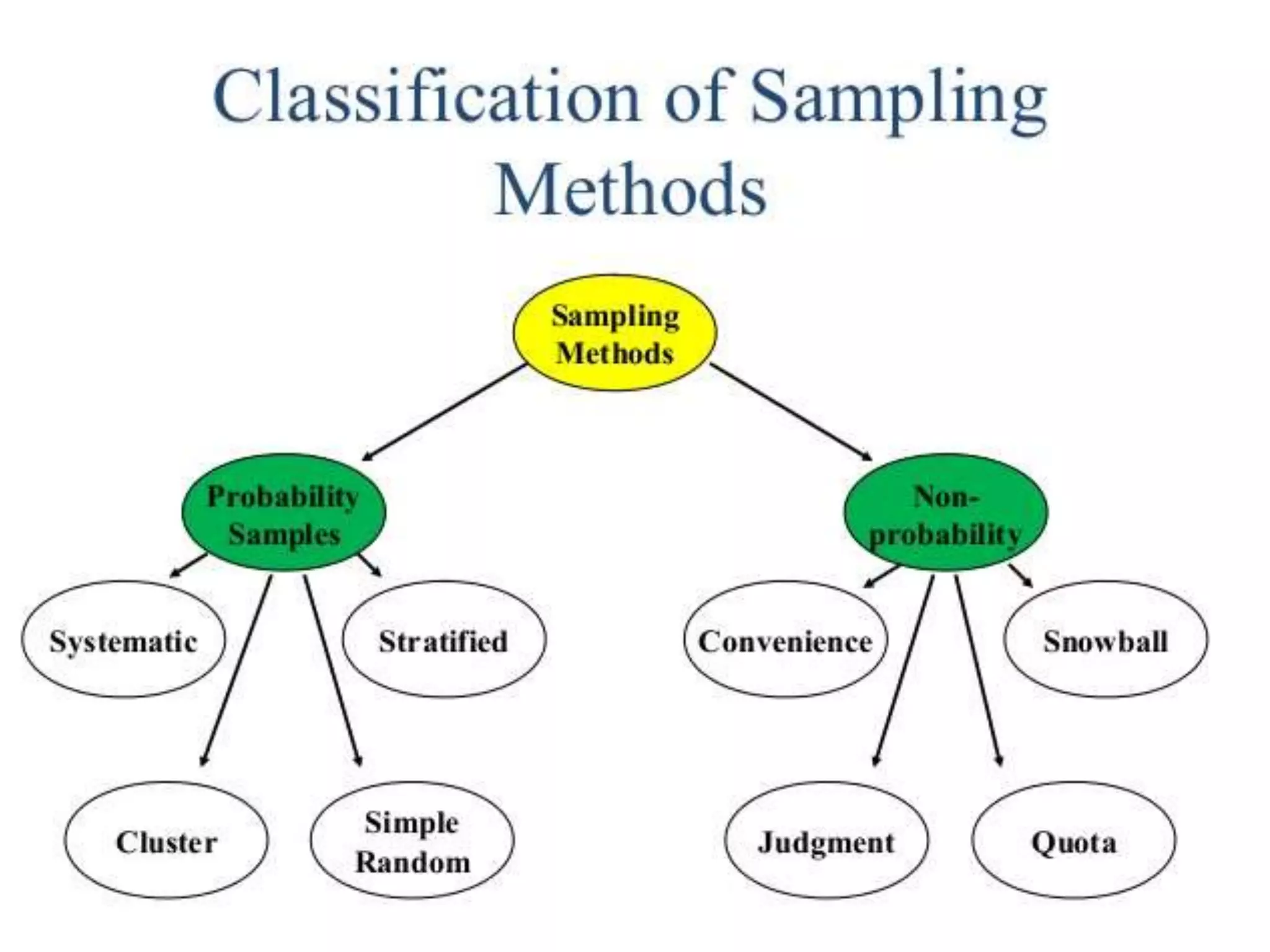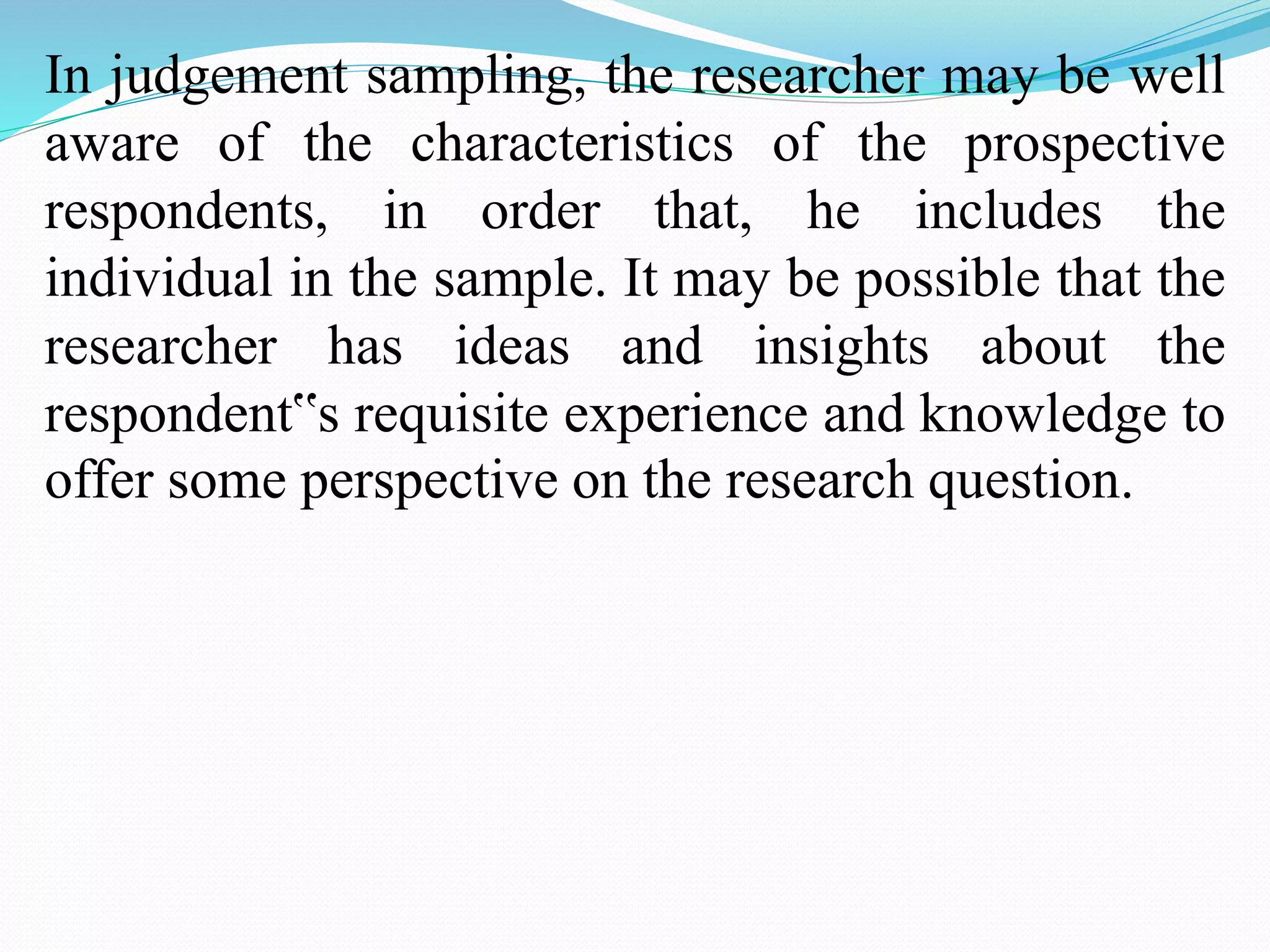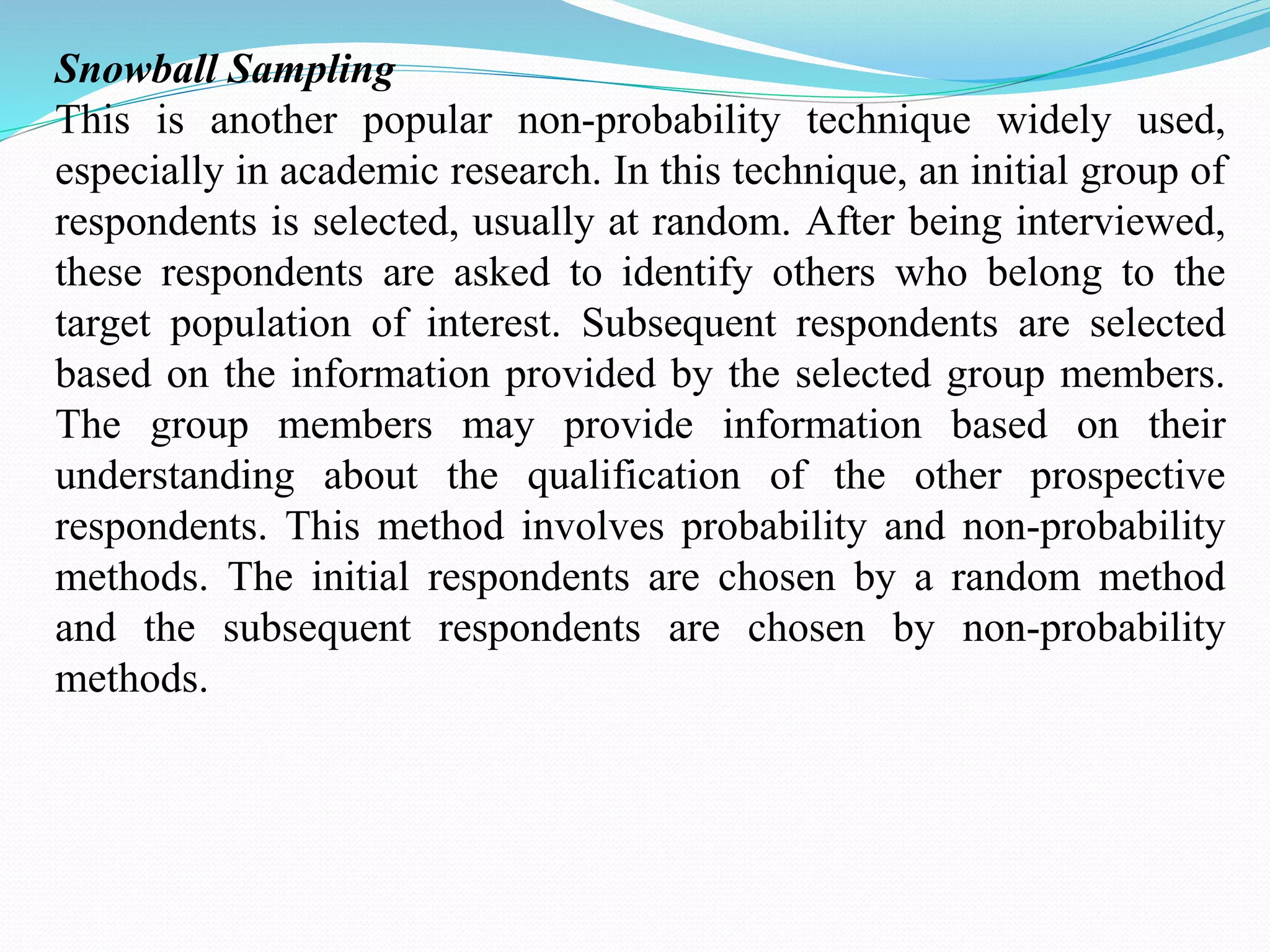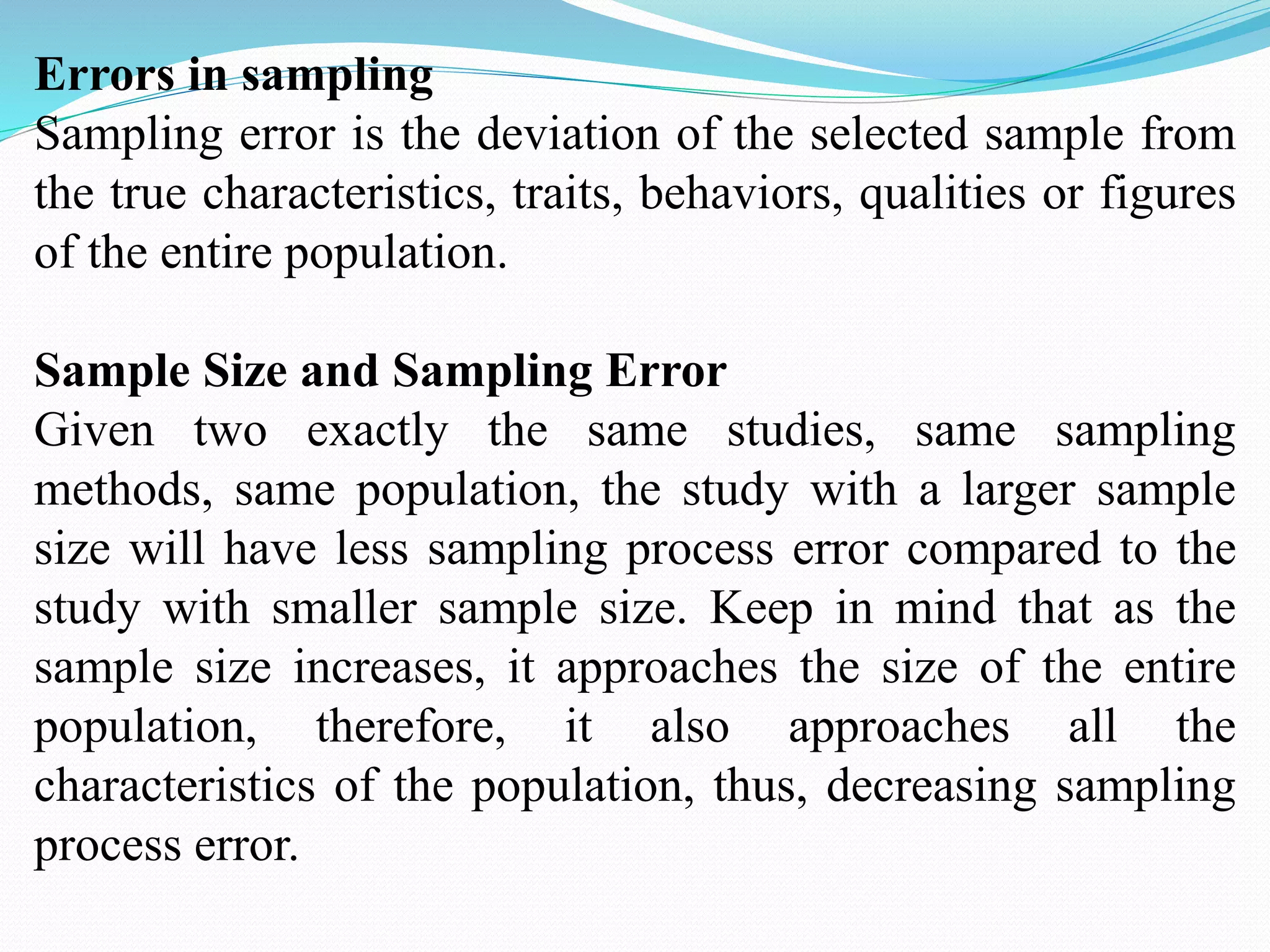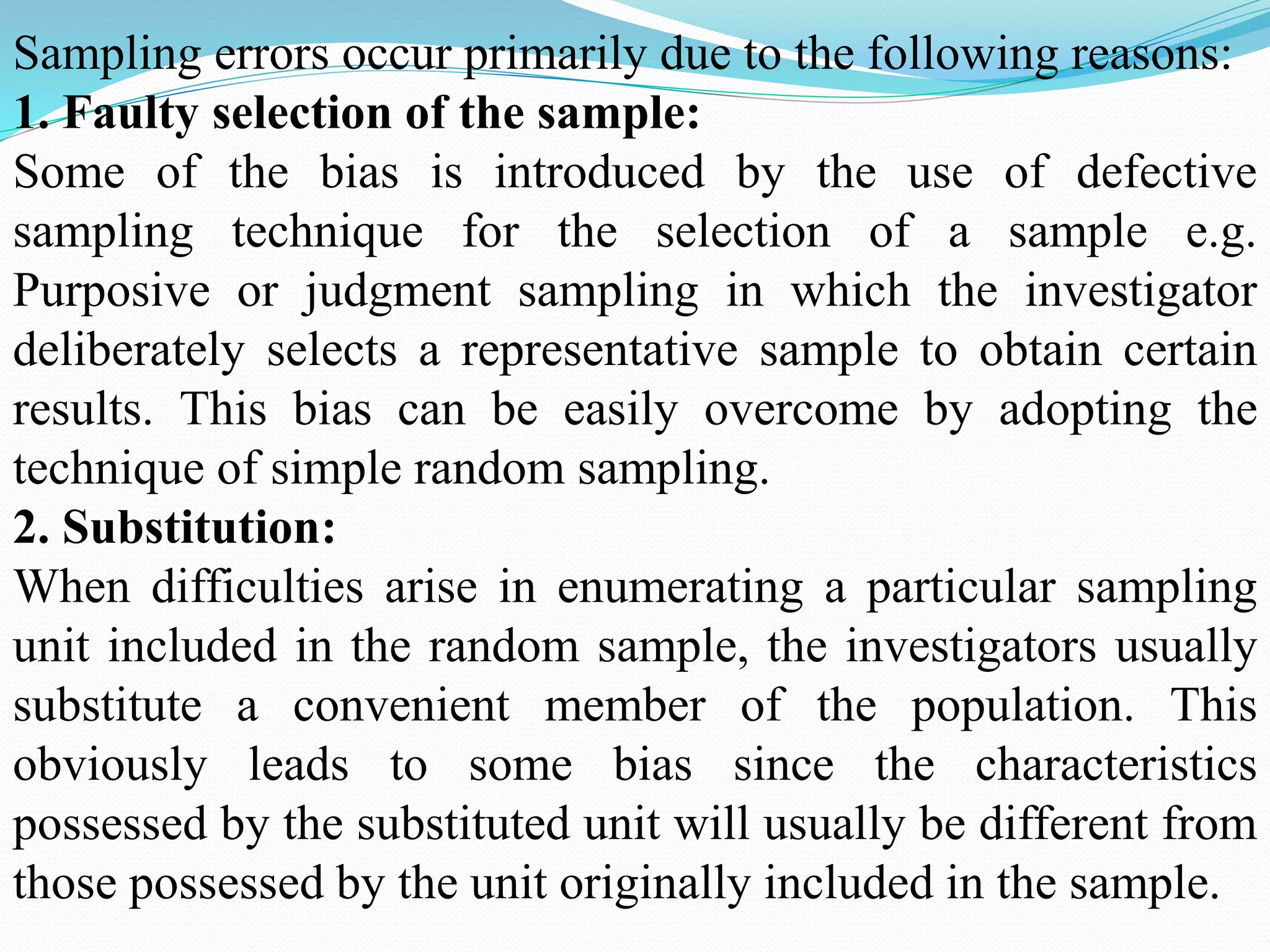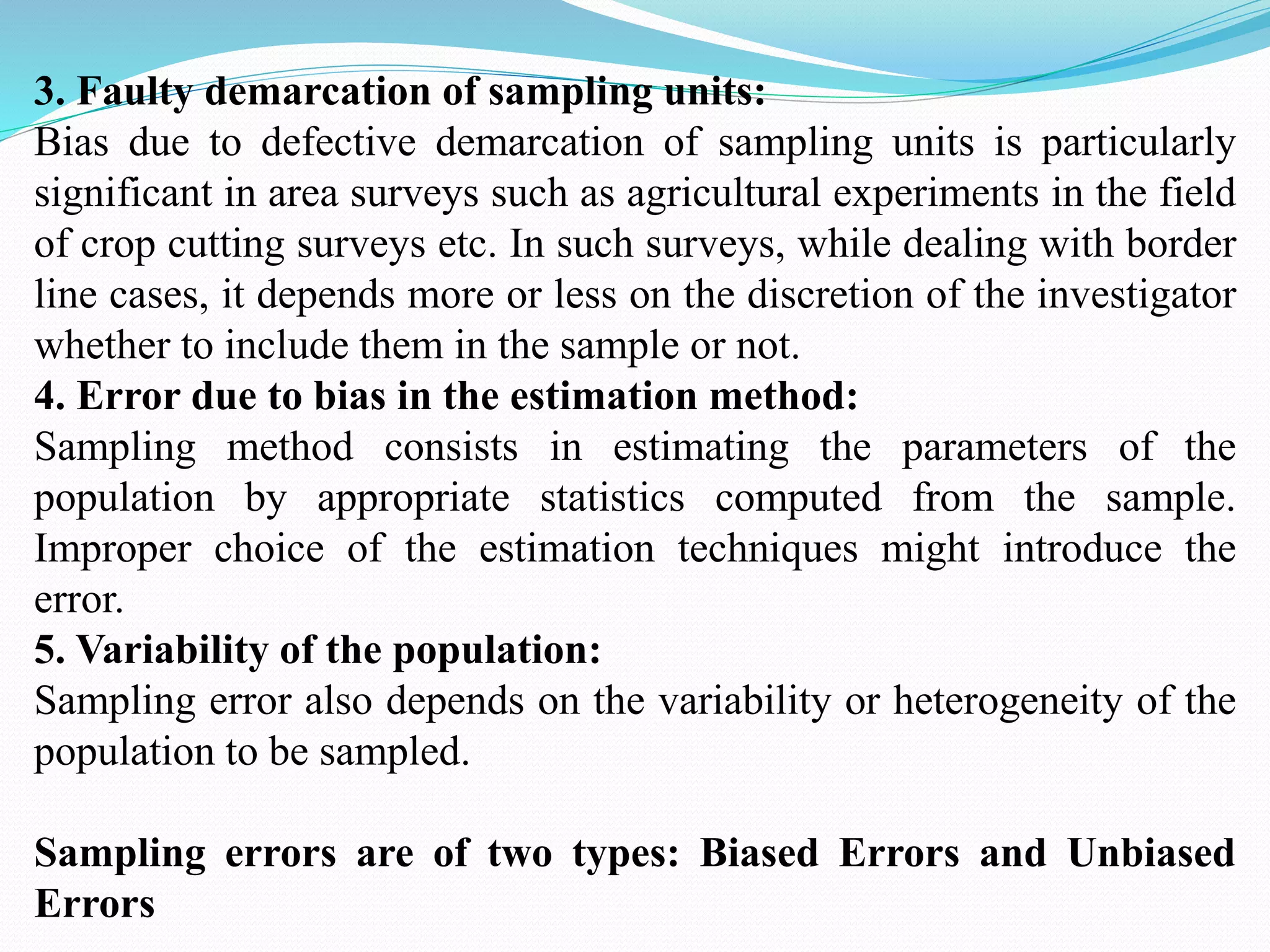Sampling involves selecting a subset of a population to make inferences about the whole population. Common sampling techniques include probability sampling, where every unit has a known chance of selection, and non-probability sampling, where the probability of selection cannot be determined. Some specific sampling methods are systematic sampling, stratified sampling, cluster sampling, simple random sampling, convenience sampling, judgement sampling, snowball sampling, and quota sampling. Sampling error, the difference between the sample and the true population, can be reduced by using a large, randomly selected sample.




